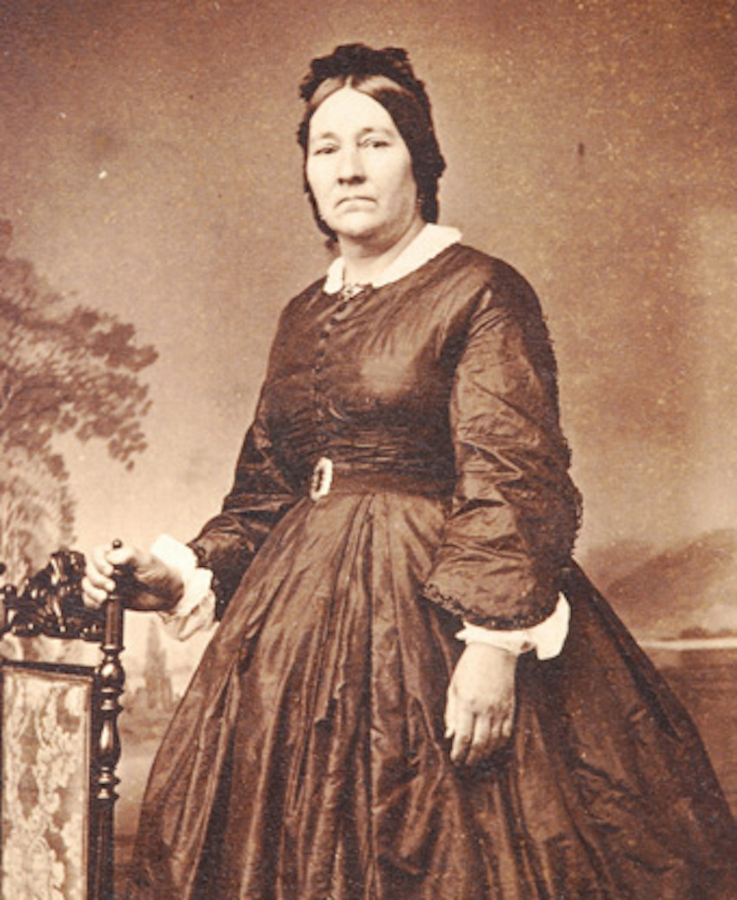The “Princess of the Columbia” lived a cosmopolitan life within the walls of Fort Vancouver, a remote Hudson’s Bay Company outpost on the Columbia River, yet found it also stifling.
Eloisa McLoughlin, the cherished second daughter of Dr. John McLoughlin and his wife Marguerite, was born in 1817 at the North West Company’s Fort William (Ontario, Canada) where her father worked as a doctor and a clerk.
Her father helped merge the North West Company with the Hudson’s Bay Company, receiving a promotion to chief factor and orders to build Fort Vancouver on the Columbia River. With her father headed to the Pacific Northwest, Eloisa said farewell to her brother, John Jr., who attended school in Canada. She also bid goodbye to her older stepsisters and stepbrother and her older sister, Eliza, who remained behind to attend school. After traveling overland with her mother, the 7-year-old Eloisa arrived at Fort Vancouver about 1824.
While the new fort may have seemed a cosmopolitan hub, Eloisa’s life there remained sheltered and isolated. Although the McLoughlins’ accommodations were comfortable, they stayed aloof and distant from other Hudson’s Bay Company employees. Further, few women lived at the fort, and they ate in a dining hall separate from the men. Whenever her father held court in the men’s dining hall, Eloisa complained she never saw anyone.
The 1836 arrival of the Whitman and Spalding missionary party reversed that. The chief factor arranged for meals in his “big house” and included Eloisa, her mixed-blood mother, the missionary couples and James Douglas and his wife. When Marcus Whitman and Henry Spalding traveled away from the fort for months, their wives, Narcissa and Eliza, remained McLoughlin’s welcome guests.
The mixed marriages and biracial offspring at the fort appeared to not bother Narcissa Whitman, who wrote that Eloisa was “quite an interesting young lady” and liked her mother also. She tutored Eloisa and helped school children until Rev. Herbert Beaver protested. Regardless of Beaver’s objection, Eloisa recognized her father entertained mixed-gender groups more often at their house and credited the missionaries’ presence as decreasing her loneliness.
Eloisa’s father refused her first suitor, Francis Ermatinger, a company clerk. Instead, she’d wed William Glen Rae. Rev. Beaver performed the services — likely reluctantly — because he hated the bride’s father. The following year, McLoughlin sent Rae to Fort Stikine in Alaska. Eloisa called it a “miserable place” with rocks all around and drunken employees brawling outside the fort gate.
They returned in 1841, sailing on the steamship Beaver. Along the way, Eloisa delivered a daughter, Margaret Glen. McLoughlin sent his son-in-law to set up a post at Yerba Buena (San Francisco), giving him the title of chief factor. Communication between Fort Vancouver and the new station was poor, and Rae faced antagonistic local authorities and combative local politicians, which led to alcoholism, depression and his 1845 suicide, just as Eloisa was bearing their fourth child.
As the widow returned to Fort Vancouver, her father’s conflicts with Hudson’s Bay Company officials mounted. The family retreated to Oregon City, where Eloisa married Englishman Daniel Harvey, who ran McLoughlin’s Oregon City mills. They moved to Portland in 1858, where her husband died in 1868 and she in 1884.
Martin Middlewood is editor of the Clark County Historical Society Annual. Reach him at ClarkCoHist@gmail.com.



